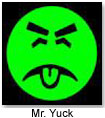Every year, thousands of children are injured in incidents involving a variety of child products, including car seats, toys, grooming products, high chairs, clothing, cribs and even playgrounds. In 2003 alone, an estimated 155,400 children were treated for toy-related injuries. When a child is harmed, who´s to blame? Is it the child? The negligent parent? No, it´s the unsuspecting product manufacturer — or so the plaintiffs would have you believe.
Manufacturers often face products liability lawsuits involving child injuries. The amounts awarded to plaintiffs in such cases have grown to unparalleled numbers in recent years. Often, however, the party at fault is the negligent caregiver who has failed to properly restrain, monitor or warn the child, or to properly assemble the product. In spite of this, juries may choose to award huge sums of money to these plaintiffs.
When faced with such lawsuits, there are several points manufacturers should consider while developing their defense strategy:
1. Should a Child Be Called to the Stand?
In civil litigation, the attorney has to make the decision about whether to involve a child witness in the process. Sometimes, not calling a child witness at trial can be a strategic error. Children may be more likely to accurately inform the court about whether the toy was properly assembled at the time of the accident, or whether daddy sometimes “forgets” to strap him into his highchair.
In a recent case involving failure to warn issues in vehicle restraints and the failure of a parent to use a booster seat, the child testified under oath that she had one at home and that it fit her, thereby nullifying the warnings’ issues. Children may be more willing than adults to make “admissions” merely by telling the truth, if properly questioned.
2. Is Your Warning Label Working?
 In many cases, plaintiffs assert that the manufacturer could have avoided potential injuries had it provided a better warning label. Manufacturers must deal with this issue long before litigation. While most warnings are written for adults, those that are used by children without adult supervision should be tailored to the intended age of the user.
In many cases, plaintiffs assert that the manufacturer could have avoided potential injuries had it provided a better warning label. Manufacturers must deal with this issue long before litigation. While most warnings are written for adults, those that are used by children without adult supervision should be tailored to the intended age of the user.
Mr. Yuck, an ill-looking cartoon, still heads up a decades-old campaign that has effectively alerted children to the dangers of household chemicals. Still available from poison control centers nationwide, green stickers bearing his image are easily recognized by kids as denoting harmful substances. While owner’s manuals for toys are appropriately directed to caregivers/parents, manufacturers would be advised to create their own kind of Mr. Yuck to help educate children.
3. Focus on Fact, Not Emotion.
Manufacturers must also consider their counsels’ ability to neutralize the jury’s sympathy. Catastrophically injured children often appear in court in wheelchairs or through a “day in the life” video and can give a jury the foundation for making a personal “heartstrings” decision. It is incumbent on the manufacturer to display the defense of their product as also very personal to the defense. Showing that a design engineer of a stroller actually straps his child into that same stroller will make the jury see the human side of the company.
In summary, child plaintiffs present unique and challenging issues for manufacturers as they prepare for and participate in civil litigation. Understanding the obstacles is the best way for a manufacturer to prepare, and will save time and money in the long run.

